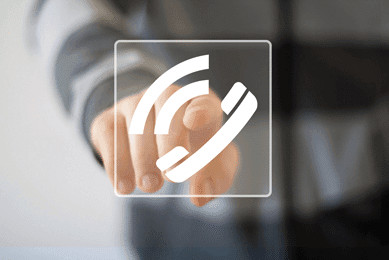 It’s amazing how much information you can find about VoIP but how little it will actually help you. Marketing tends to throw you into the middle of this new world without telling you the rules that govern it.
It’s amazing how much information you can find about VoIP but how little it will actually help you. Marketing tends to throw you into the middle of this new world without telling you the rules that govern it.
This series of blogs will help SMBs understand the basics of VoIP, starting with what has changed in telephony since Time Division Multiplexing (TDM) – and what hasn’t changed at all. (And don’t worry if you don’t know what TDM is; we’ll explain later.)
When people say Voice over IP, the common misconception is that the phone lines are Voice over IP. People tend to imagine that the Internet has phone lines in it somewhere, taking your call from the business out across the Internet and to its final destination. But reality is much different than that. The innovation of VoIP only goes as far as the signal that represents your voice signature, and how that signal connects with phone lines.
The way they used a copper wire in the past to transmit data was an innovation, in its own right. The innovation allowed multiple call paths to communicate across a single strand of copper. That was Time-Division Multiplexing (TDM), allowing up to 24 different wavelengths, or audio streams over a piece of copper. That is 24 different conversations, assuming of course that each conversation involves two people speaking.
The key difference with VoIP is that – instead of wavelengths, VoIP uses 0s and 1s to record and transmit your voice signal. When you digitize the audio in this way, and packetize it, you aren’t communicating wavelengths any more, and that 24-wavelength restriction no longer applies. At all. One piece of copper wire can transmit hundreds of VoIP audio streams, which makes VoIP really, really inexpensive by comparison.
So instead of conversations, VoIP is restricted by bandwidth, which is in part why VoIP providers tend to give you unlimited extensions for free, and why one phone line can give you pretty much unlimited incoming and outgoing calls. It isn’t a magic trick; VoIP is just a much, much more efficient way of transmitting audio.
Now, you might be thinking, why are we talking about copper? Don’t we use more advanced, optical fiber to transmit signals these days? Well, the answer is yes, sometimes, and sometimes no. We’ll dive into that next time.
Call our business managed IT services department directly at (404) 777-0147 or simply fill out this form and we will get in touch with you to set up a getting-to-know-you introductory phone call.
Fill in our quick form
We'll schedule an introductory phone call
We'll take the time to listen and plan the next steps
11285 Elkins Rd Suite E1, Roswell, GA 30076
© Copyright 2024 Centerpoint IT. All Rights Reserved. Website in partnership with Tech Pro Marketing. | Privacy Policy
Get Immediate Help For All Your Technology Issues (404) 777-0147

If you want our team at Centerpoint IT to help you with all or any part of your business IT, cybersecurity, or telephone services, just book a call.
Fill in your information below to get started today.
"*" indicates required fields
Fill in your information below to schedule now.
"*" indicates required fields
Before your organization commits to 1, 2, 3 or even longer managed IT services contract, understand what you’re getting. Centerpoint IT gives you the facts in our Managed IT Services Buyer’s Guide.
Enter your information below and we’ll send it over.
"*" indicates required fields

We are turning 15 and want to celebrate this milestone with you because without you this would not have been possible. Throughout this year look for special promotions on services and tools aimed at Making IT Simple for You so you can focus on your business.

We are turning 15 and want to celebrate this milestone with you because without you this would not have been possible. Throughout this year look for special promotions on services and tools aimed at Making IT Simple for You so you can focus on your business.
https://calendly.com/centerpoint-it/discovery-call